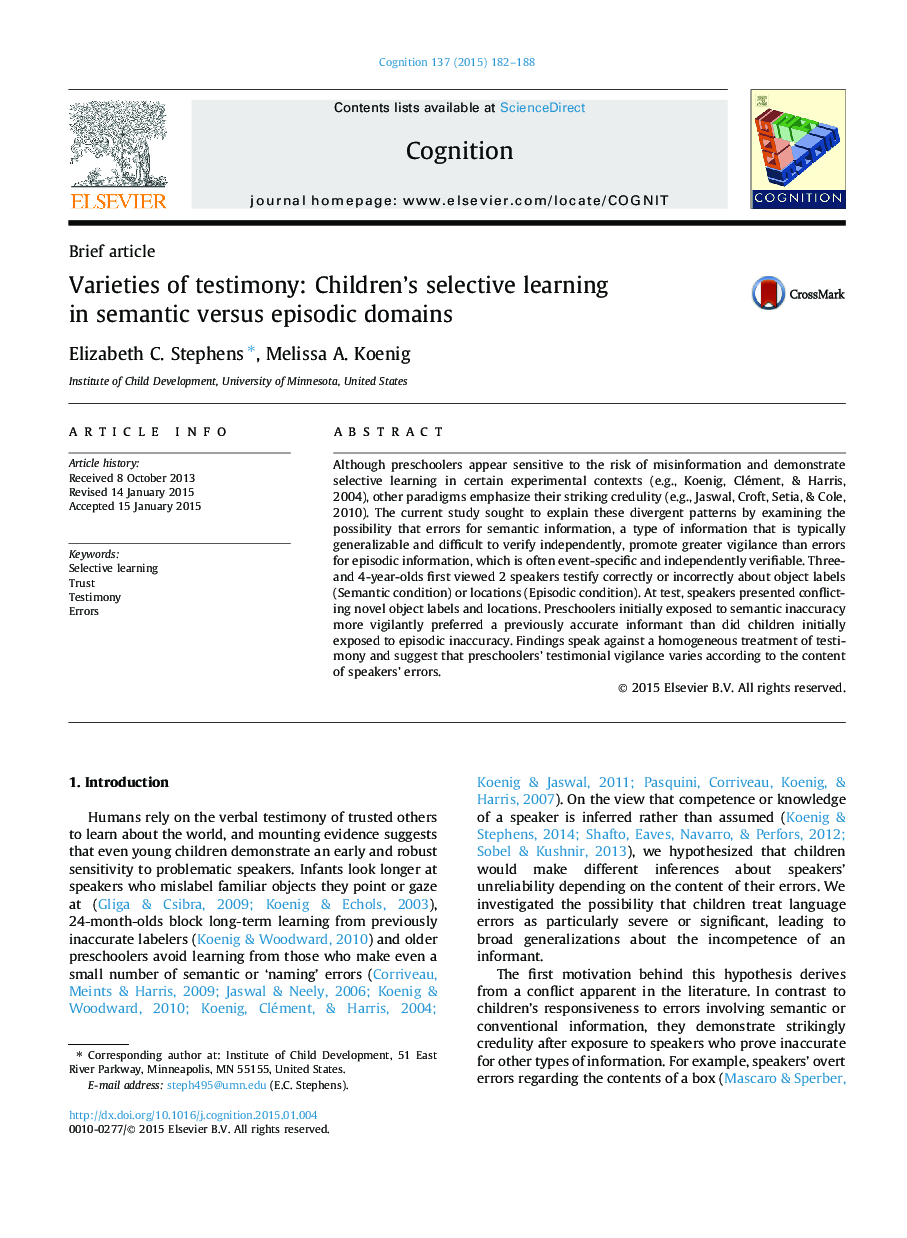| Article ID | Journal | Published Year | Pages | File Type |
|---|---|---|---|---|
| 7287282 | Cognition | 2015 | 7 Pages |
Abstract
Although preschoolers appear sensitive to the risk of misinformation and demonstrate selective learning in certain experimental contexts (e.g., Koenig, Clément, & Harris, 2004), other paradigms emphasize their striking credulity (e.g., Jaswal, Croft, Setia, & Cole, 2010). The current study sought to explain these divergent patterns by examining the possibility that errors for semantic information, a type of information that is typically generalizable and difficult to verify independently, promote greater vigilance than errors for episodic information, which is often event-specific and independently verifiable. Three- and 4-year-olds first viewed 2 speakers testify correctly or incorrectly about object labels (Semantic condition) or locations (Episodic condition). At test, speakers presented conflicting novel object labels and locations. Preschoolers initially exposed to semantic inaccuracy more vigilantly preferred a previously accurate informant than did children initially exposed to episodic inaccuracy. Findings speak against a homogeneous treatment of testimony and suggest that preschoolers' testimonial vigilance varies according to the content of speakers' errors.
Related Topics
Life Sciences
Neuroscience
Cognitive Neuroscience
Authors
Elizabeth C. Stephens, Melissa A. Koenig,
